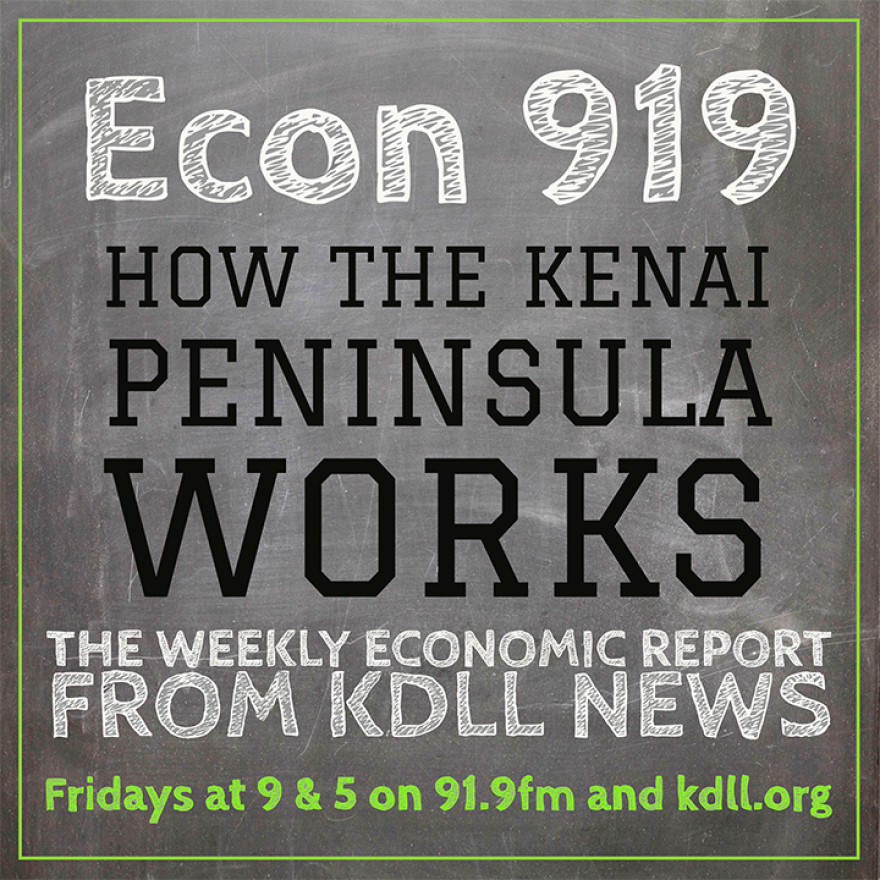The ground on the central Kenai Peninsula is still buried beneath a thick, albeit shrinking, layer of snow. But the Division of Forestry has already started preparing for this year’s wildfire season, which typically falls between late April and August.
Kyle McNally works at the division’s Soldotna office, as a wildland fire resource technician. He said part of preparing means assessing what the division has at the ready.
“What can we expect as far as, who do we have in our department, and then what adjacent resources do we have available? So we try to come up with a big collective plan," he said.
Each year, the division trains and hires new hourly employees as part of that plan. They’re called emergency firefighters, or EFFs, and they’re brought in to supplement the salaried workforce when wildland fires reach a certain threshold.
The first step to becoming an EFF is getting a Red Card. Red Cards are recognized nationally as a basic qualification to becoming a firefighter.
Problem is, it can be hard to find people who can dedicate the time and energy to the program.
"One of the difficulties with our EFF program has always been incentives," McNally said.
For one, firefighting is not predictable work. Some fire seasons are worse than others, so it’s hard to guarantee shifts for employees.
“Certainly for myself, I would never expect someone who’s not guaranteed work to just sit around and wait for the call, you know?”
Take a year like 2019, when parts of the peninsula were engulfed by the Swan Lake Fire. In times like those, EFFs are called in more frequently.
“During the season, we work 8- to 10-hour days pretty normally," McNally said. "And then as our fire danger levels increase, we can work 12 to 14 hours a day.”
But in a slow year, EFFs might be off for weeks at a time.
The pay is also a sticking point. EFF wages currently start at $16.13 an hour.
McNally said his team is working to make it so EFF workers have more support and more to do.
“So one of the things that we’re trying to push for is maybe changing that idea of, we can only bring EFFs on in a planning level three, or a fire danger level of three, that we can actually bring them on prior to that so that we can get them prepped and trained so that when we do call them, because we have an increased fire potential, that they’re actually already ahead of the curve instead of behind the curve," McNally said.
He also likes the idea of bringing on EFFs to do fuel mitigation work, like addressing beetle kill. Beetle kill can amplify the risk of wildfires, like now, with a spruce bark beetle outbreak in Southcentral.
While there’s funding for beetle kill mitigation coming down the pike now, during the outbreak, that funding won’t be around indefinitely to support firefighter projects. McNally said the division is trying to figure out what other projects it can use EFFs for.
“There’s nothing set in stone right now, but we’re trying to develop that program so EFFs have more to do outside of just when we hit a planning level three and need people," he said.
The division wants a big pool of EFFs because the state recruits workers from that pool.
That’s how McNally started with the division. He happened upon the Red Card course by accident, thinking it was a class about cabin maintenance. He realized when he arrived he had made a mistake.
“And I was a little thrown by that, but also interested," he said.
McNally took the course in 2015, which was a big season for fires. A few weeks after, he joined as an EFF.
As for this year’s Red Card classes, there are 15 people signed up. McNally said they usually have a class of 30.
Meantime, the potential for wildland fires is increasing state- and nationwide.
“And the reason that that exists is because we have so many more people that are moving into more of a rural landscape, and they’re kind of wanting to get away from your traditional urban areas," McNally said.
McNally said the division sees about 60 to 80 fires each season. Some of those fires are small and don’t spread outside of an acre.
"Our mission, essentially, is to catch everything under 10 acres," he said.
When it doesn’t have enough staff, the division can pull firefighters from the Lower 48. That’s possible since the fire season Outside starts later than the season in Alaska.
McNally said this season will likely be relatively delayed, due to all the snow. But, he said, make no mistake — fires can still happen before snow melts completely.
Red Card training, which includes 40 hours of class time and a day in the field, starts late April. Classes are free.
There are some prerequisites. Students must be 18 or older by May and have to pass a test that involves carrying a 45-pound pack for three miles in 45 minutes or fewer. Other than that, McNally said the division sees a range of people sign up.
“There’s really no perfect recipe for people that we’re looking for," he said. "Mostly just willingness to learn, hardworking and a little humility goes a long way in this job.”
The Red Card is good for five years, with four-hour refresher classes.





